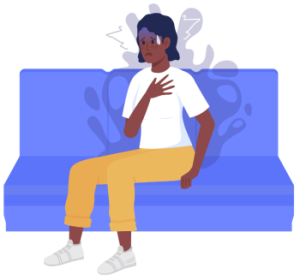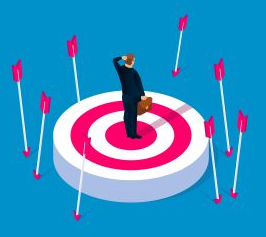Strategies for Managing the Student and the Situation
When a student has OCD, the patterns of problems of the disorder may become more obvious and predictable. It’s unrealistic to expect disciplinary action to change what the student is unable to change, and it may actually create more stress for the already distressed student and exacerbate symptoms.
Try these strategies:
Allow a break to defuse anxiety. A student with OCD may be allowed to leave a situation to calm down or regroup: stand outside the classroom or walk down the hallway or leave the room briefly to get a drink of water or run an errand to help clear the obsessive thoughts.
A school nurse or counselor may be designated as a safe place to go for a few minutes. To avoid classroom disruption, give the student a small card with the words GO or BREAK to quietly leave the room without drawing attention to the exit. Or develop a private hand signal to indicate the need to leave the room. Teachers should make every effort possible to help students maintain self-esteem among their peers.
Watch for and document medication side effects. Nausea, increased anxiety, jitteriness, and insomnia are relatively common side effects of medication, especially during the initial phase of treatment. If they are frequent, unusual, or severe, contact the parents immediately. Watch for these more serious side effects:
- Tremors, difficulty speaking, slurring speech
- Extreme restlessness, motor activity, jumpiness
- Slowed thought processes
- Rigid muscles or uncontrollable spasms; any seizures
- Excessive sleepiness
- Extreme stomach upset
- Contortions of muscles or the face
- Unusual or extreme eye movements
School personnel should share any behavioral changes with parents to give a complete picture of their child’s behavior in school. It’s important that teachers take the time to complete checklists or questionnaires when asked by mental health providers who are treating their students. Feedback from school personnel can be crucial in terms of determining the appropriateness or effectiveness of a student's medication.
Try to recognize tough spots and respond appropriately. Teachers can improve the student's chances for success by recognizing a particular difficulty and responding in a constructive way. Before explaining an assignment, the teacher may need to capture the attention of the class by announcing that directions are about to be given. A change in tone of voice or modulating speech may also help to break through the OCD thoughts.
Seating accommodations. Students who have OCD who sit closer to the door can exit easily if they need to leave the room. Or they may need to sit close to the teacher, who can get their attention when they start to lose focus.
Create different expectations. Some students will not be able to finish an in-class or homework assignment in the expected length of time. The teacher can reduce the amount of work required or set limits on the amount of time to spend on homework.
Traditional Behavior Modification Principles = Ineffective
Symptoms of OCD frequently do not respond to traditional behavior modification principles. Obsessions and compulsions may not respond to positive and negative consequences. OCD is not a willful behavior that can be stopped simply by altering motivation. Trying to use positive or negative consequences to alter the motivation of a student who is extremely anxious and caught in a checking ritual is ineffective and very possibly could increase anxiety and worsen symptoms.
Before using positive and negative consequences with students who have OCD, it may be helpful to talk with the student and the parents to discuss whether this would help or hinder progress. Also, if consequences are used, school personnel should carefully monitor the student's behavior to be sure that the OCD symptoms do not worsen.
However, positive reinforcement may be effective for in certain situations. Rewards may be effective when trying to teach a student to use and maintain a behavior that replaces an inappropriate or interfering OCD behavior; for example, using hand sanitizer at the desk instead of constantly going to the restroom to wash hands.

















